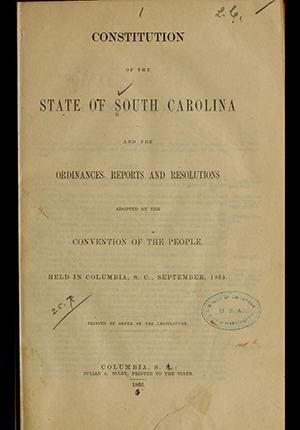Juneteenth - The holiday known as Juneteenth, so called because it is celebrated annually on June 19, is the oldest commemoration of the end of slavery in the United States. Recognized as Emancipation Day among African Americans, it marks the anniversary of the official freeing of slaves in Texas on June 19, 1865, in Galveston. Just as the Fourth of July celebrates liberty for all American people, for descendants of former slaves, Juneteenth symbolizes the attainment of freedom. Honoring the legacy of struggle and perseverance on the part of African Americans throughout their enslavement, Juneteenth also serves as a day of reflection on African American progress .- Mustakeem, Sowandé. “Juneteenth.” Encyclopedia of Emancipation and Abolition in the Transatlantic World, by Junius Rodriguez,
National Juneteenth Museum - From the pursuit of physical freedom to today’s discussions of equity, justice, peace and unity for all, the museum will serve as a place to share the historic path of the once enslaved, making it a destination for tourism and collaborative education.
Reconstruction Era 1865 - 1877 The period following the Civil War was dominated by controversies over restoring the Union, aiding the former slaves, and rebuilding the devastated South. By the end of the Civil War, the South was devastated. The Union army had burned cities, uprooted train tracks, and destroyed plantation homes and cotton gins to suppress Confederate resistance. At least 4 million newly emancipated slaves sought food, shelter, and work alongside an impoverished and resentful white community. -Reconstruction from Encyclopedia of American Political Parties and Elections
The Freedmen's Bureau assisted tens of thousands of formerly enslaved people and impoverished whites in the Southern States and the District of Columbia in the years following the war. It helped freedpeople establish schools, purchase land, locate family members, and legalize marriages.

Marriage of a colored soldier at Vicksburg by Chaplain Warren of the Freedmen’s Bureau (Library of Congress)
Reconstruction and Black Gains - Reconstruction, Revised Edition, Chelsea House, 2018. American History
Reconstruction and Black Politicians - From 1870 to 1898, 22 Black men were elected to the U.S. Congress, 2 in the Senate and 20 in the House of Representatives.

The Bright & Morning Star: Its Rise and Fall During the Era of Reconstruction (Poster).Schomburg Center for Research in Black Culture, Art and Artifacts Division
Black Codes - Black Codes were laws enacted by Southern state legislatures in late 1865 and in 1866 to restrict economic activities and control the social behavior of freedmen and freedwomen. In effect for only a short time, the Black Codes reflected Southern unwillingness to accept emancipation and its consequences after the Civil War.

South Carolina's constitution, which included the “Black Codes”
Library of Congress
Jim Crow Laws - Jim Crow laws refer to the system of de jure racial segregation enacted in the late 19th century, particularly in the U.S. South. Although racial separation had been prevalent in the North before the Civil War, under slavery there had been no need for southern states to require segregation. But after 1877 Reconstruction ended and federal troops were withdrawn, the southern states were left to sort out their own racial arrangements. By the 1890s all had adopted some form of legal segregation. Woodward, C. Vann. The Strange Career of Jim Crow. New York: Oxford University Press, 1974.
Who was Jim Crow? - By 1838, the term "Jim Crow" was being used as a collective racial epithet for black people, not as offensive as nigger, but similar to coon or darkie. The popularity of minstrel shows clearly aided the spread of Jim Crow as a racial slur. This use of the term only lasted half a century. By the end of the 19th century, the words Jim Crow were less likely to be used to derisively describe black people; instead, the phrase Jim Crow was being used to describe laws and customs that oppressed black people.
What is the Origin of the term "Jim Crow"? - The character of Jim Crow is thought to have been first presented about 1830 by Thomas Dartmouth (“Daddy”) Rice, an itinerant white actor. Rice was not the first performer to don rags and use burnt cork to blacken his face to present a mocking exaggerated imitation of an African American, but he was the most famous, and his success helped establish minstrelsy as a popular theatrical form that thrived from about 1850 to 1870.
Jim Crow Museum - The Jim Crow Museum of Racist Imagery at Ferris State University is envisioned as an international leader in the anti-racism movement. The museum will serve as a base for quality scholarship addressing the complexities of race, race relations, and racism.
